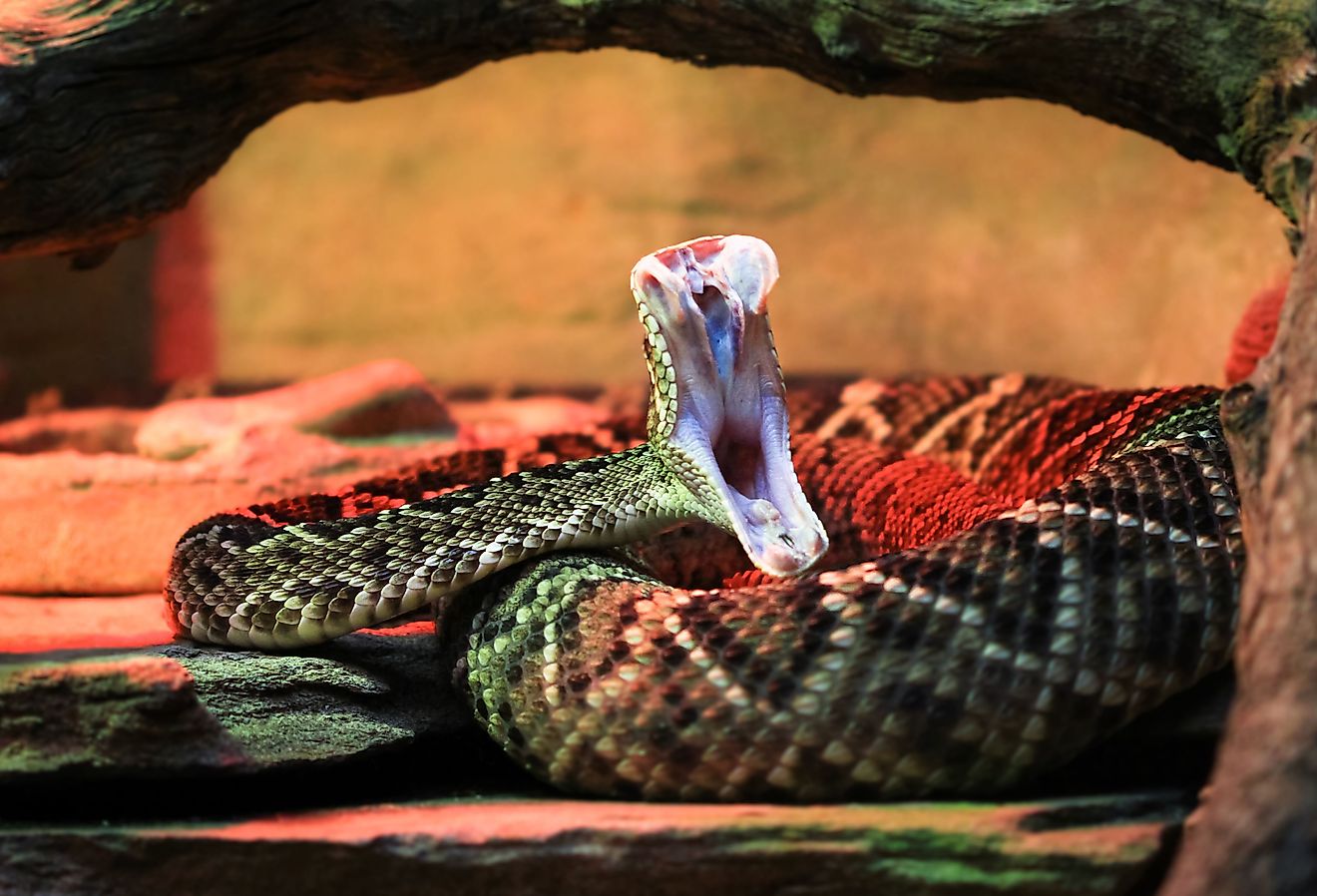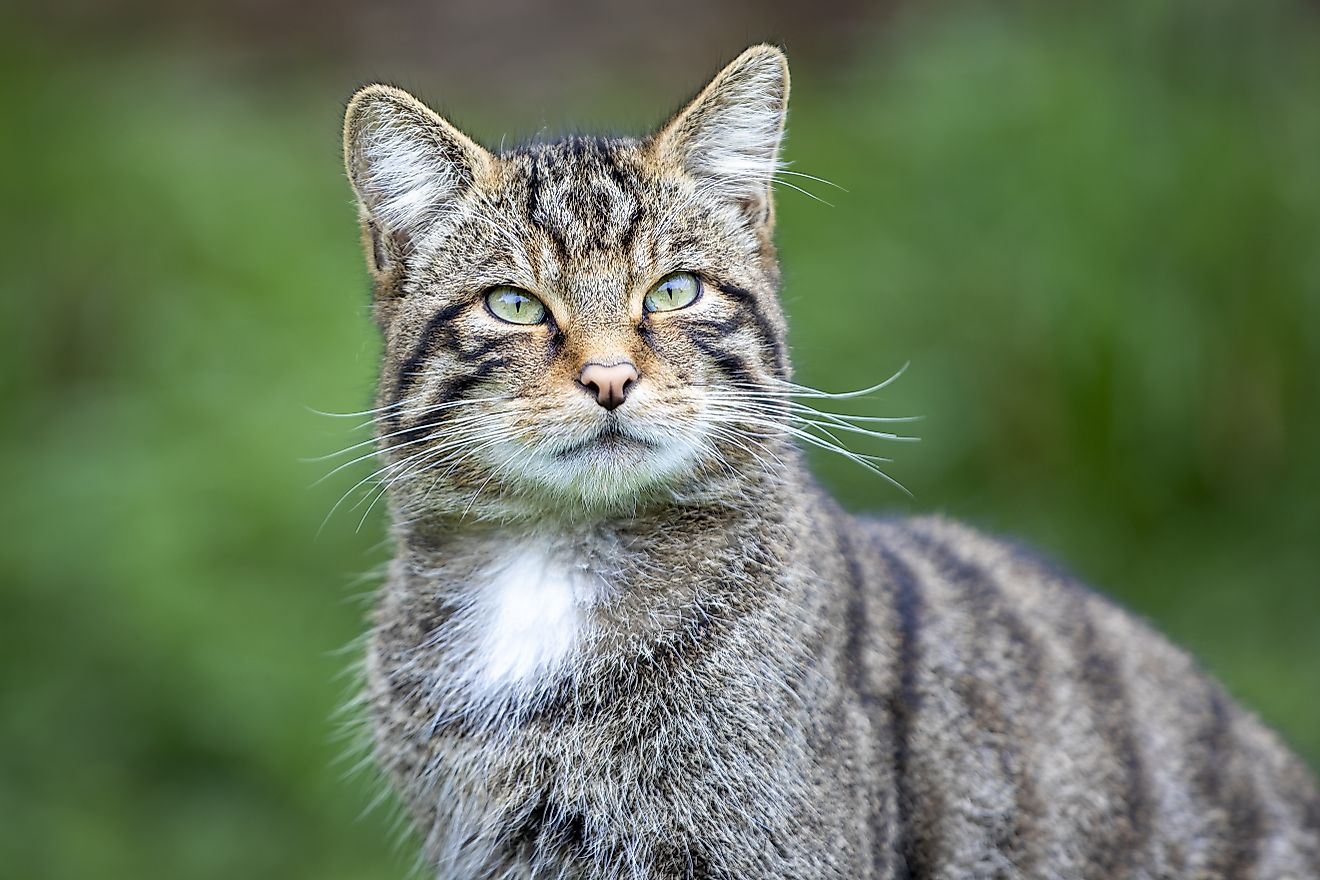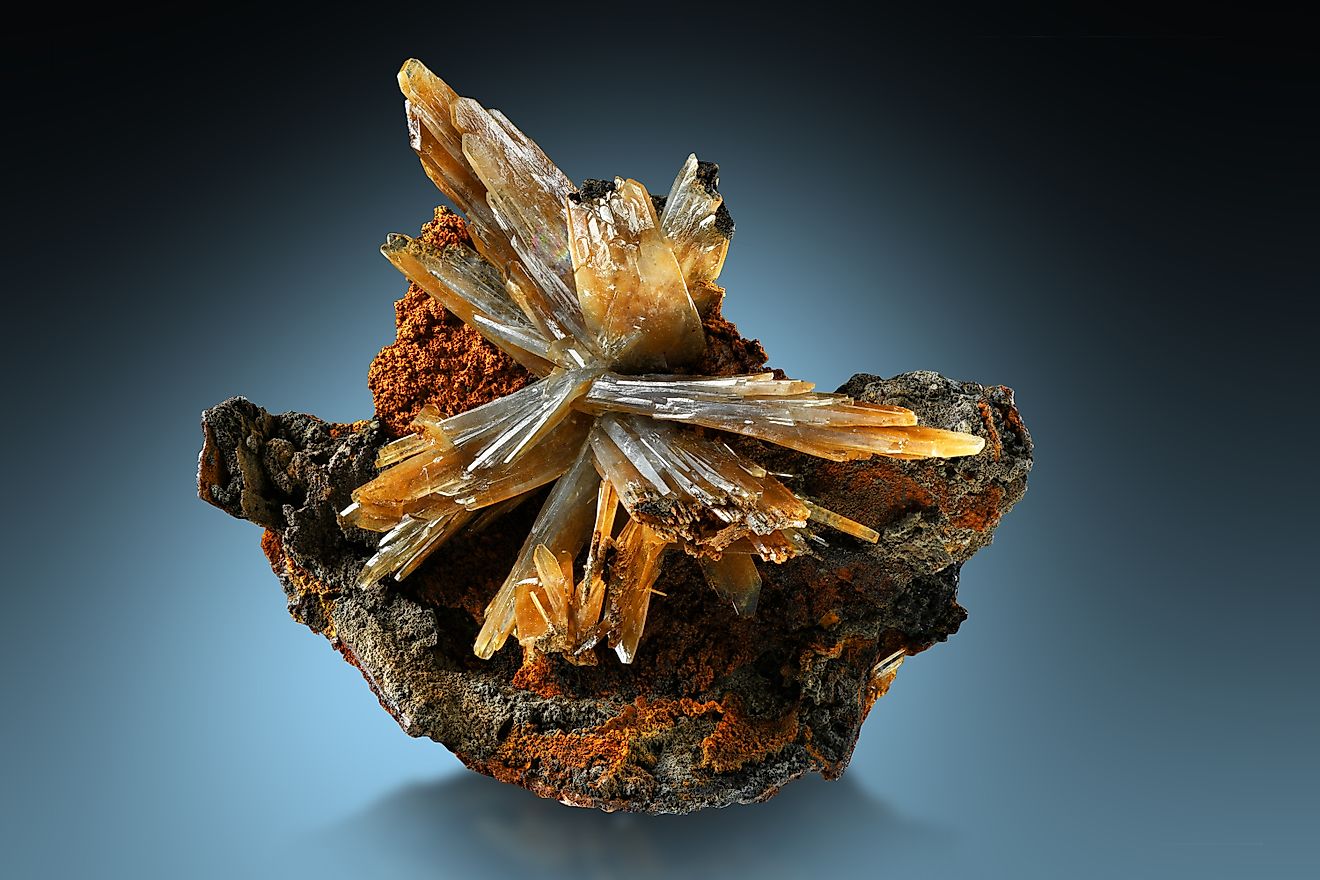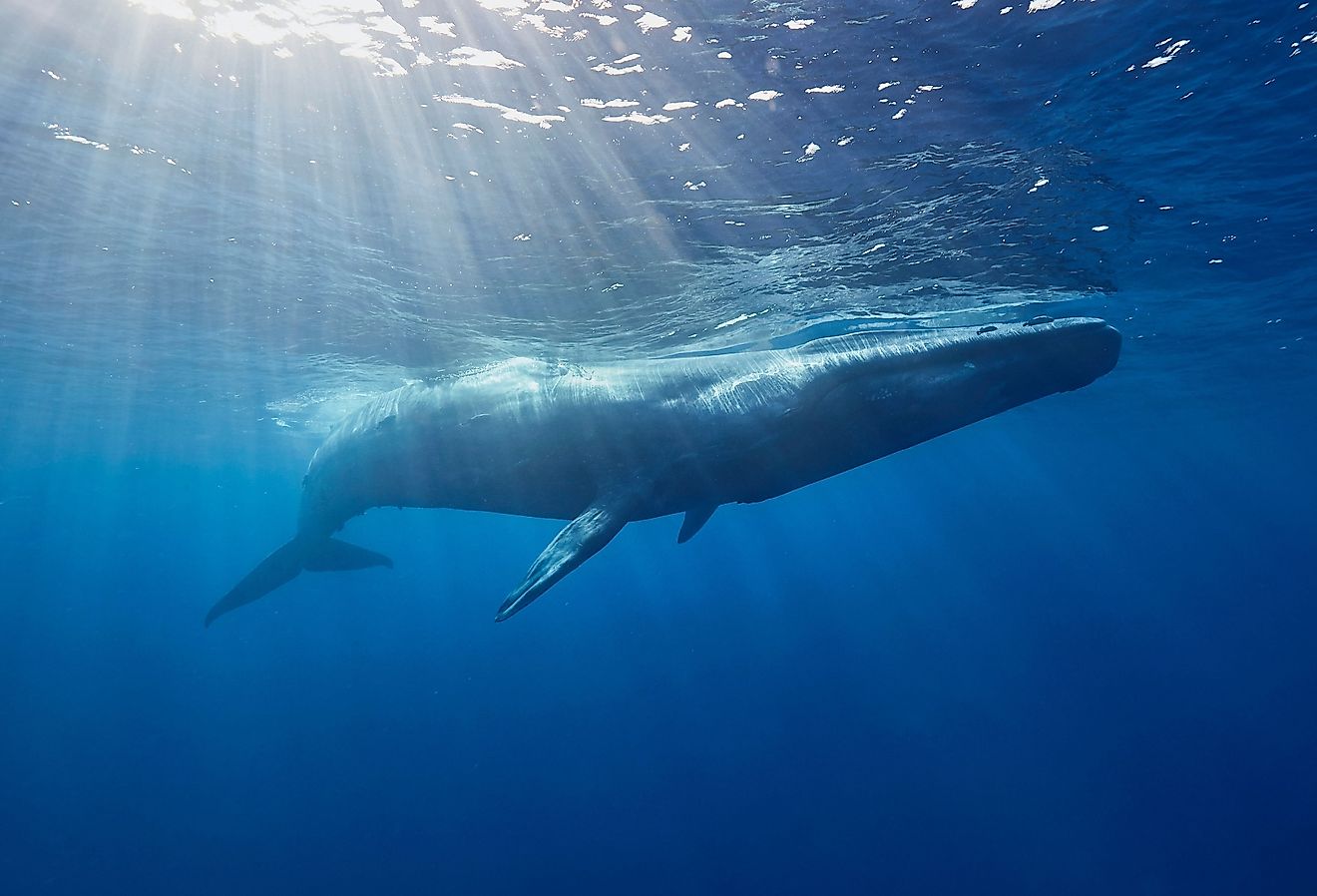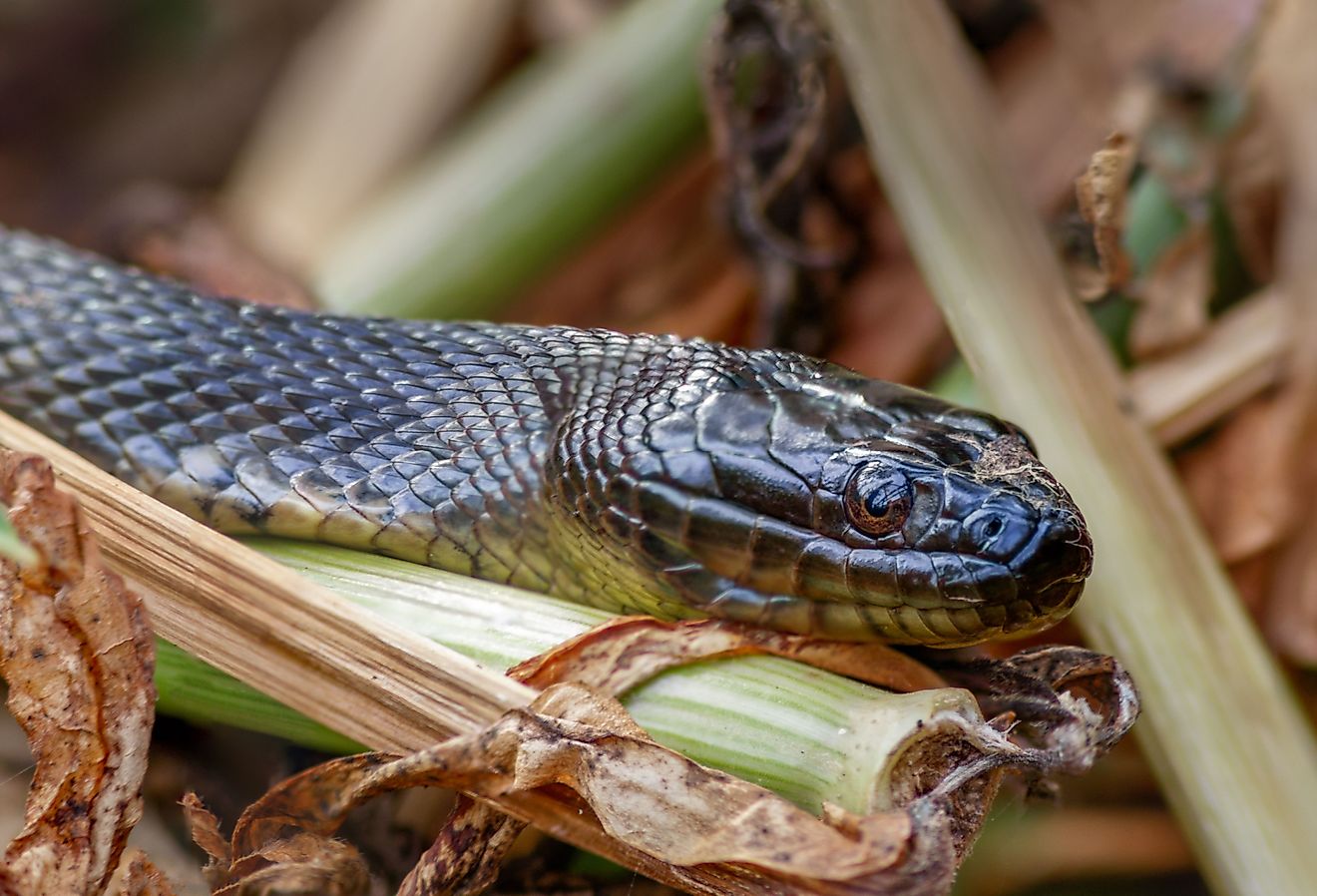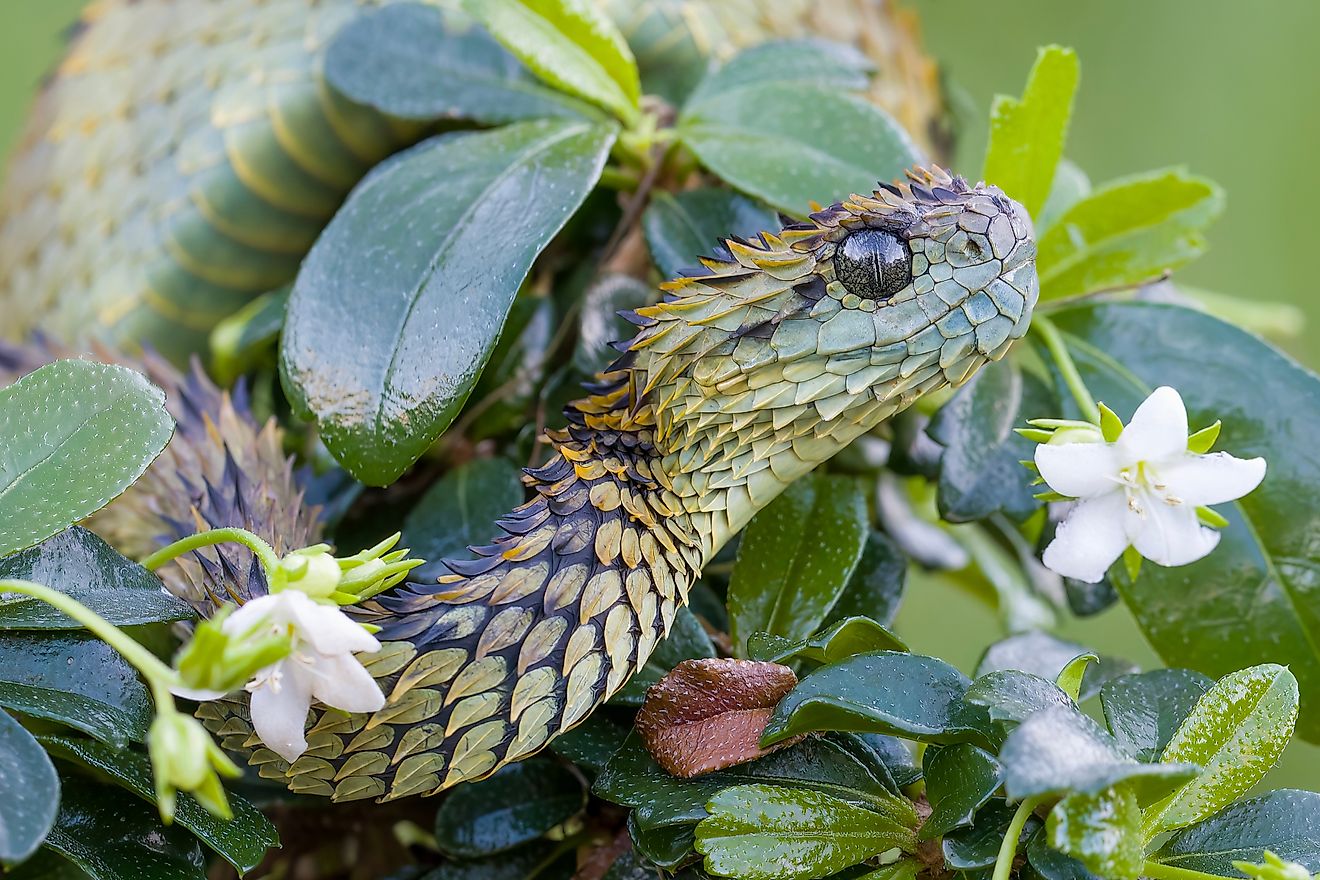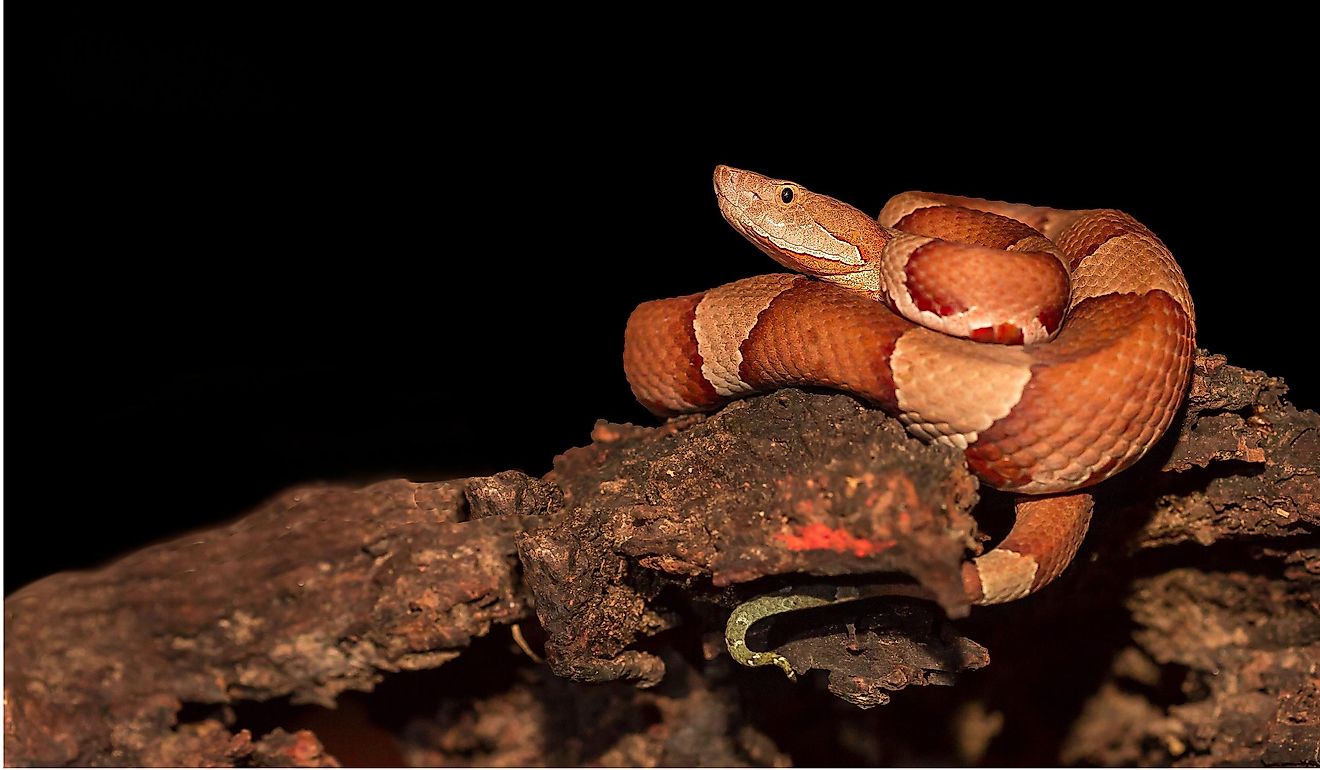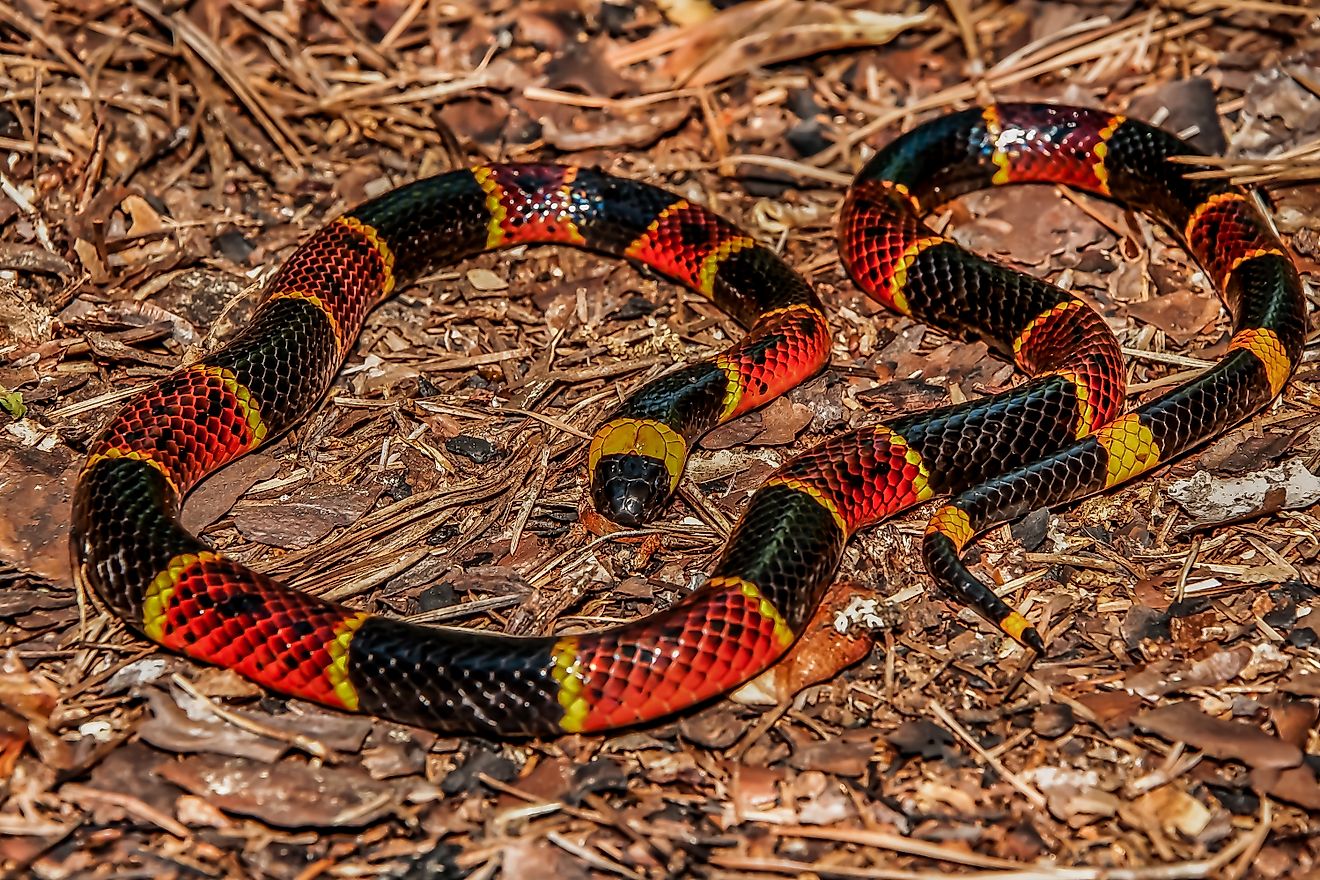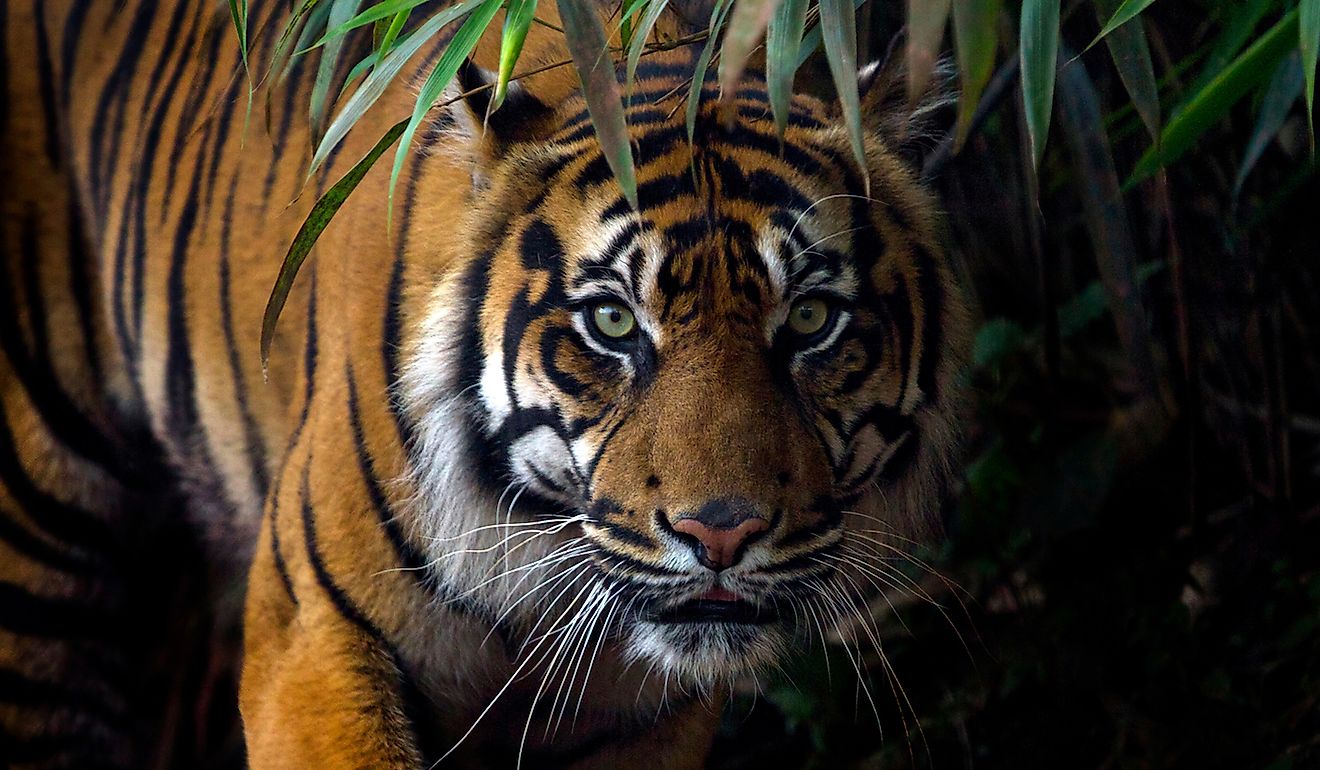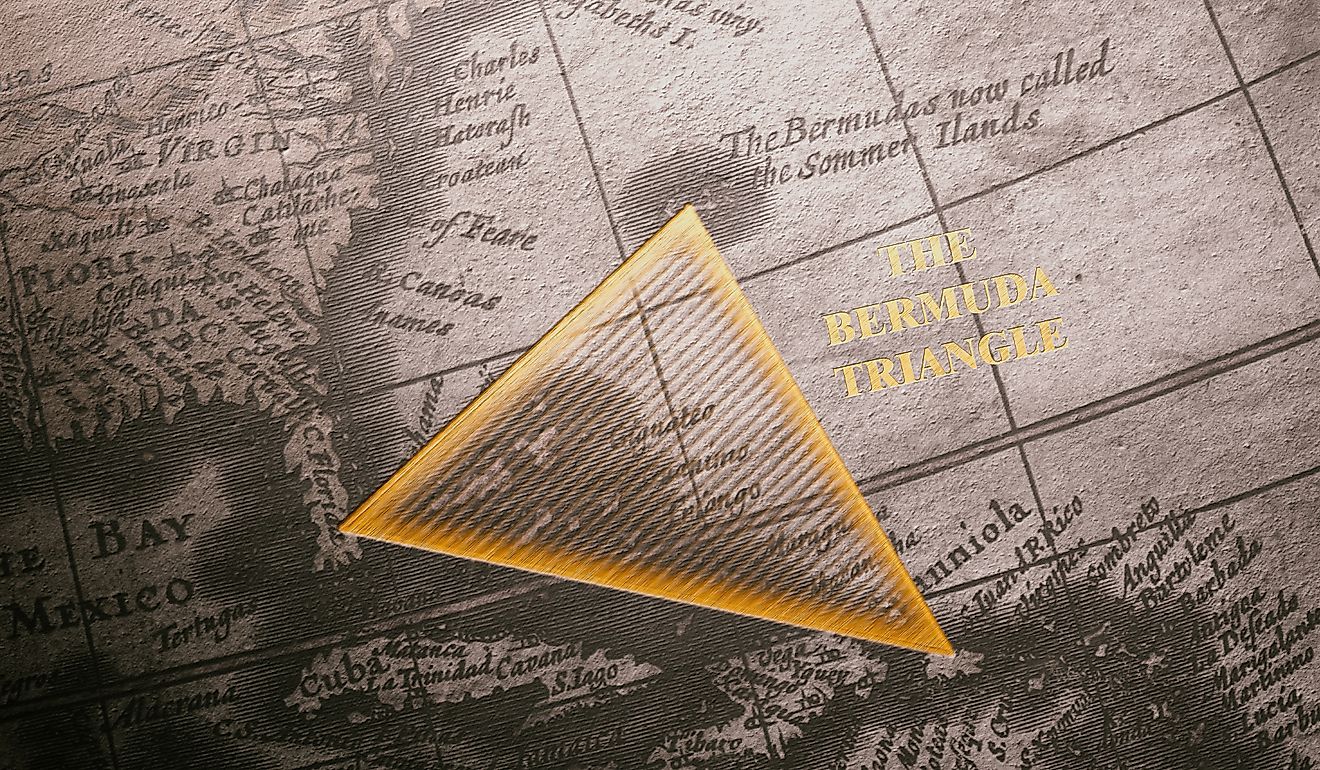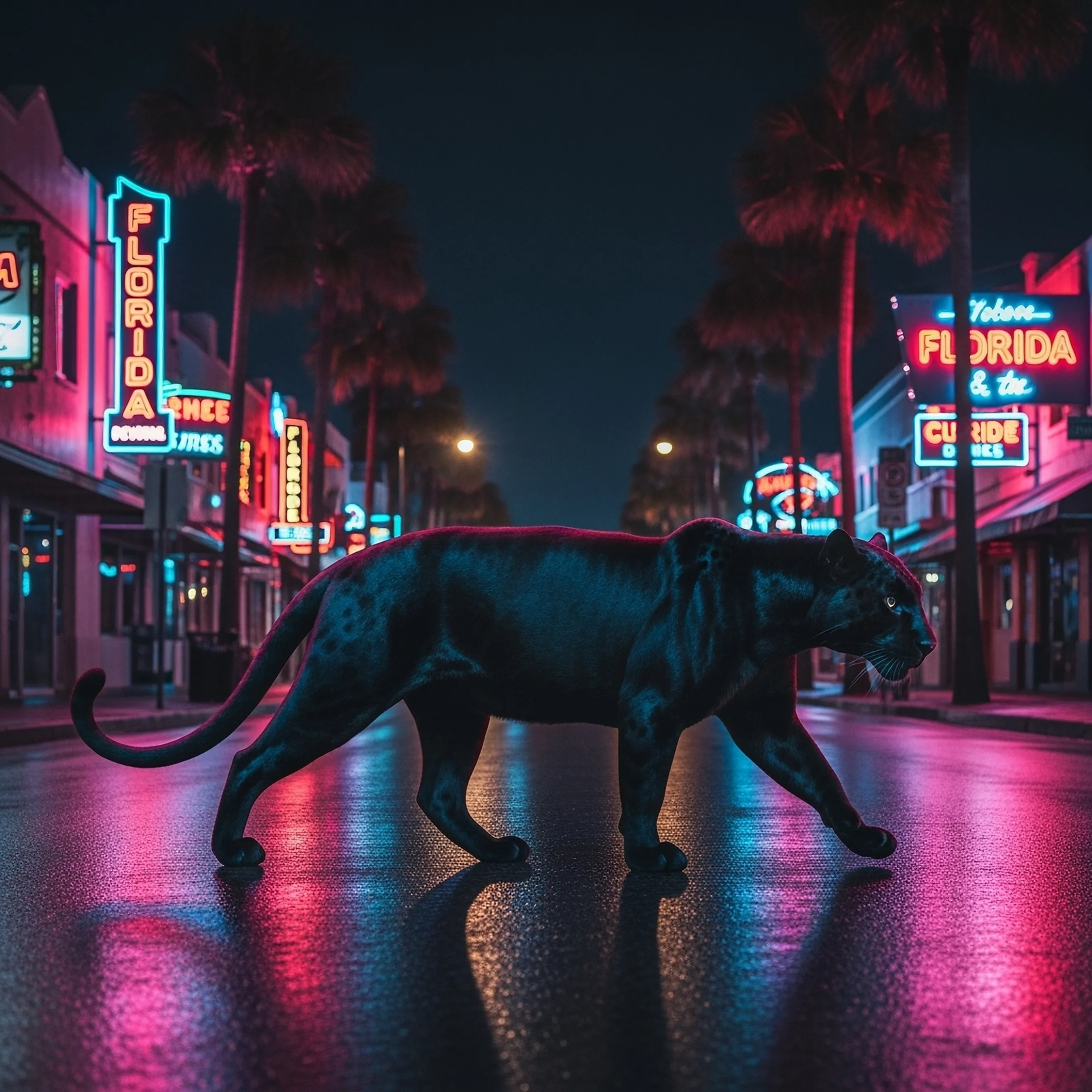
The Truth About Black Panther Sightings in Florida
The elusive ghost of the Everglades, the Florida Panther (Puma concolor coryi), is actually not a panther at all. It’s a subspecies of the North American cougar (Puma concolor). Here’s another surprise: it’s not black. This is one of the most persistent myths about the species, stemming from a mix of pop culture, common misperceptions, and confusion with other big cats. The Marvel superhero “Black Panther” hasn’t helped dispel the myth, and blurry trail cam footage of large black dogs and cats shared online often go viral, reinforcing the legend of the sleek, mysterious black cat lurking unseen in the shadows of Big Cypress National Preserve, Everglades National Park, and the Florida Panther National Wildlife Refuge. So, if these are all the things a Florida panther is not, what exactly is it?
More Banshee Than Beast
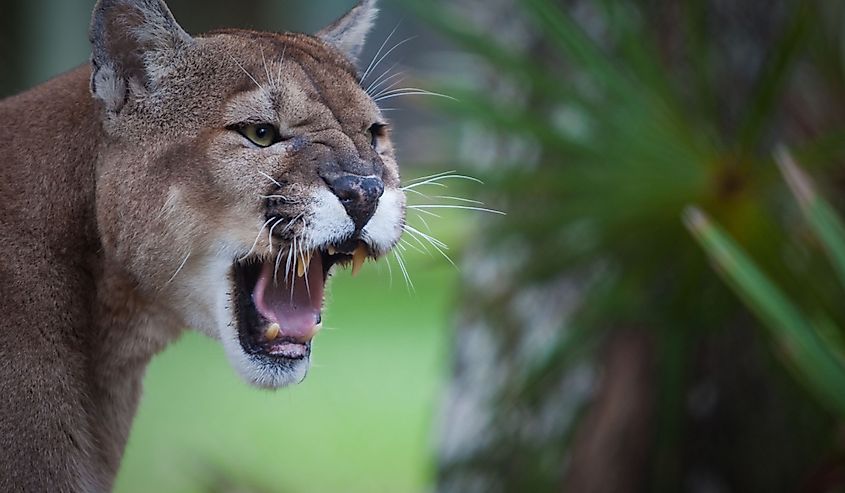
In reality, Florida panthers are spotted at birth, typically with blue eyes. As they grow and are more able to defend themselves against predators, their camouflage spots fade, their coats become tan or beige, and their eyes take on a yellowish hue. Unlike their big cat cousins, like lions, tigers, leopards, and jaguars, Florida panthers can’t roar. Chalk up this vocal flaw to anatomy, as panthers have a more rigid hyoid bone than other cat species, which affects their vocal range and prevents roaring. Instead, they hiss, growl, purr, chirp, and, most famously, scream. This eerie sound, often likened to a woman crying out in the woods, has fueled ghost stories and backwoods legends for generations.
Florida panthers are smaller than their cougar cousins. Adult female Florida panthers weigh between 64 and 100 pounds (29-45.5 kg), whereas adult male panthers, who typically grow at a faster rate than females, run from 100 to 160 pounds (45.5 to 73 kg). Males can be up to 8 feet long and nearly 3 feet tall.
Comeback Kid?
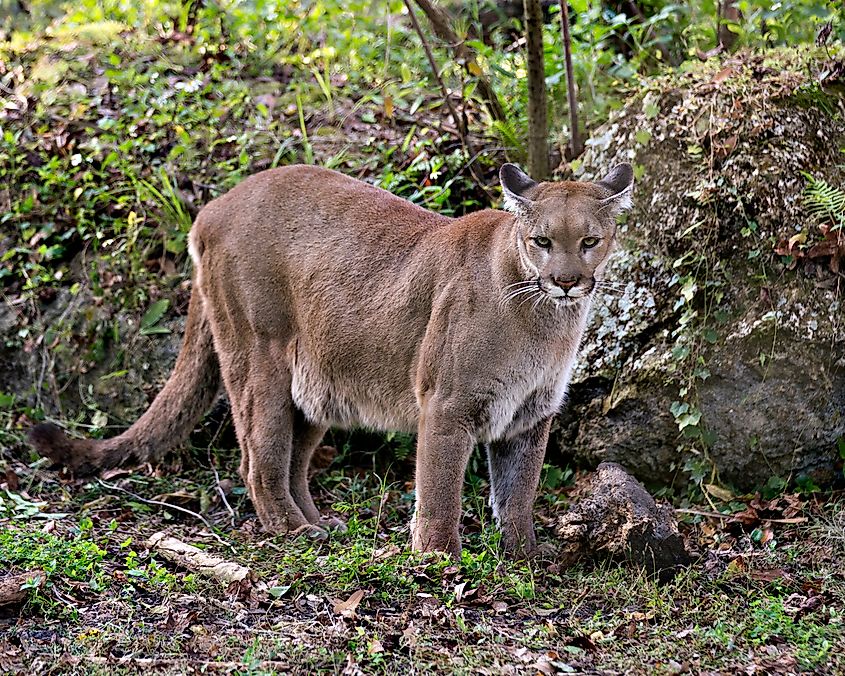
Historically, the Florida panther once roamed throughout the southeastern United States, from the Sunshine State to Louisiana, through the Gulf Coast states, as far west as Arkansas and as far north as South Carolina. Known as “lord of the forest” to the Cherokee, the panther’s survival was dependent on the millions of acres of forests, swamps, and fields. Once abundant in the eastern U.S., during the 19th century, the panther population started to decline with the arrival of settlers who viewed the cats as a threat to livestock.
Back in 1887, thanks to the common practice of offering a monetary reward for predators like wolves, coyotes, and mountain lions, the state of Florida offered a bounty of $5 per panther pelt, equivalent to approximately $150 in today’s market. In the 1930s and 1940s, a white-tailed deer eradication program was established to prevent the spread of disease to cattle, which almost eliminated the panther’s primary food source (though they also eat smaller animals, such as raccoons and feral hogs). Between a dwindling food supply, hunting, and the loss of habitat due to Florida’s explosive land and housing boom post World War II, by the 1960s, the Florida panther was on the verge of extinction. Or was it...?
Part Hunter, Part Hero
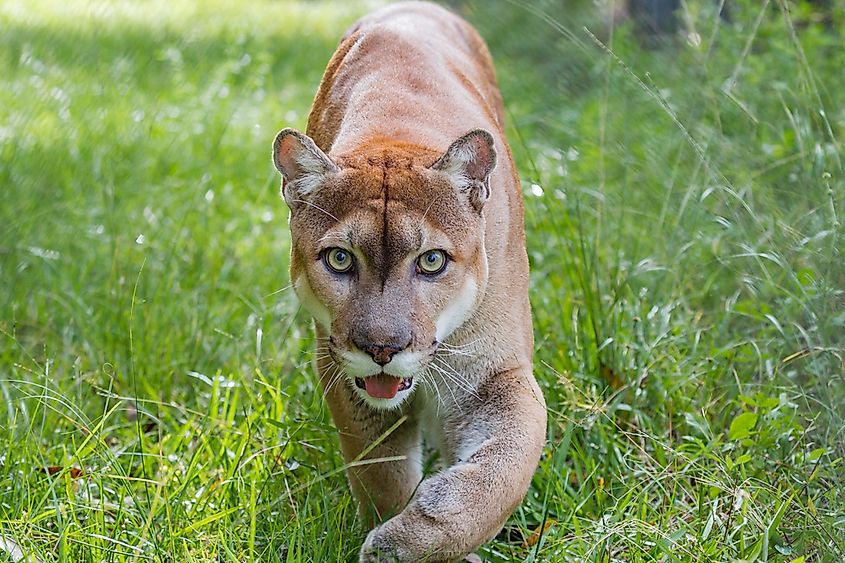
In 1958, Florida passed a law that had protected the panther from hunting, but this was almost 15 years before Congress passed the Endangered Species Act in 1973. Back in 1969, a deputy sheriff shot and killed a 100-pound panther in central Florida, then a few years later, a highway patrolman killed a panther that had been hit by a car near Lake Okeechobee. Suddenly, no one knew how many panthers were still living in the wilds of Florida. Enter one of the most active wildlife conservation organizations in the world today, the World Wildlife Fund (WWF), which decided to find out by hiring a renowned predator hunter and tracker from Texas named Roy McBride.
Thanks to McBride’s tracking skills, he confirmed a wild population of panthers living deep in the swamps of Big Cypress National Preserve, making McBride a key, albeit controversial, figure in their rediscovery. In addition to tracking the cats, he assisted in collaring the panthers for scientific research. On his recommendation, eight female cougars from Texas were introduced into Florida panther territory in the 1990s as part of a genetic rescue program, which ultimately saved the species from total extinction. Today, there are approximately 120-230 adult panthers, primarily living in southwest Florida, which are listed as Endangered under the Endangered Species Act.
From Predator to Poster Child
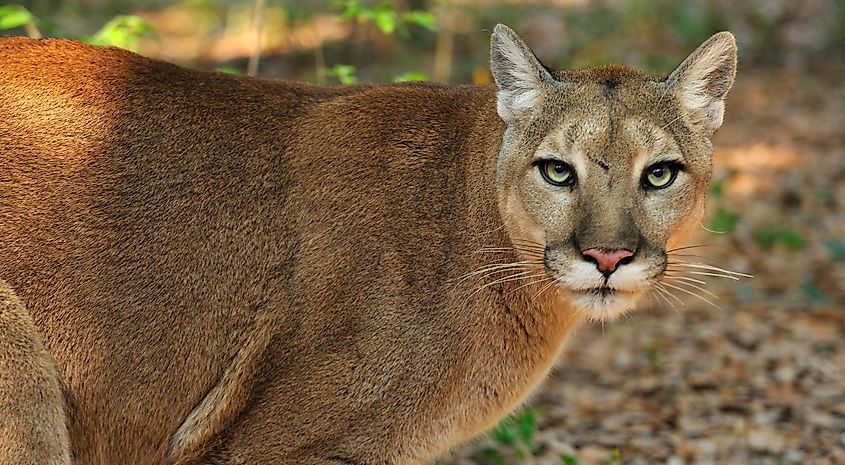
The Florida panther’s transformation from predator to conservation icon is a story of ecology, crisis, and good marketing. By the 1980s, with fewer than 30 panthers in the wild, they had become a symbol of wild Florida, its swamps, ancient forests, and hammocks, highlighting what Florida stood to lose through unchecked condo development, increased interstate highway construction, and urban sprawl. In 1982, the Florida panther was designated the official state animal following a statewide vote by school students. When Florida entered the National Hockey League (NHL) in 1993, it chose the Florida Panthers as its team name, followed by the Carolina Panthers in the NFL in 1995.
From just a few dozen to a couple hundred, Florida panthers are slowly reclaiming their territory; however, their future remains uncertain due to continued habitat loss, highway fatalities, and interactions with humans. It remains one of the ten most threatened mammals in the U.S., and certainly the most endangered big cat in North America today.
